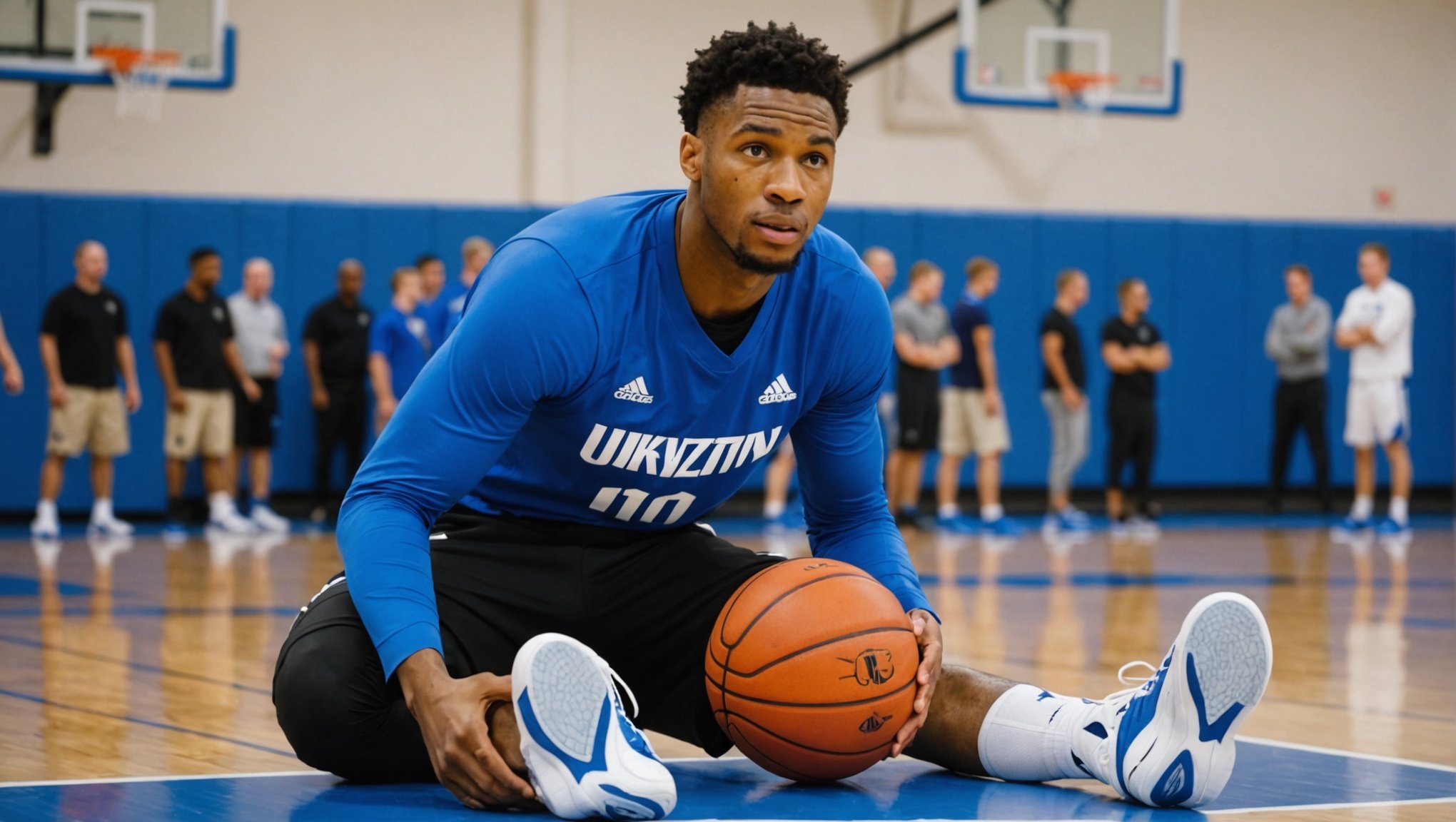Importance of Post-Game Stretching for Basketball Players
Implementing a post-game stretching routine is vital for basketball players to enhance injury prevention and muscle recovery. After intense physical exertion during a game, muscles can become tight and fatigued. Stretching alleviates tension and promotes flexibility, preparing muscles for future workouts and reducing injury risk.
Benefits of Stretching for Muscle Recovery
Allowing muscles to gradually cool down with stretching increases blood flow and nutrient delivery, aiding recovery. This simple recovery technique can mitigate soreness and expedite the healing process after the strain of a game.
In parallel : Top Mobile Apps to Boost Basketball Training for Players in the UK
Relationship Between Stretching and Injury Risk Reduction
By maintaining muscle elasticity, stretching combats the risks of injuries like strains or pulls. Regular post-game stretching keeps muscles in optimal condition, contributing to a sustainable athletic performance. For specific basketball-related movements, stretching helps stabilize joints, directly influencing the reduction of potential injuries.
Importance of Post-Game Routines Specific to Basketball
Basketball players often engage in explosive movements like jumping and sprinting. A tailored post-game routine that incorporates stretching is critical for addressing the unique demands of the sport. Emphasising stretches that target key muscle groups used in basketball—such as calves, hamstrings, and quadriceps—helps align the body for both immediate recovery and long-term performance improvement.
Also to read : Essential Recovery Strategies for UK Basketball Players Post-Game: Boost Performance and Well-Being
Recommended Stretching Routines for UK Basketball Players
Engaging in effective stretching routines is crucial for basketball players to enhance performance and prevent injuries.
Upper Body Stretching
Developing flexibility in the upper body is pivotal for shooting and defensive movements in basketball. Incorporating both static and dynamic stretches can significantly benefit players. Static stretches like the shoulder stretch and triceps stretch focus on the shoulders and arms. Static stretches involve holding a stretch position for several seconds, thereby reducing muscle tightness.
Dynamic stretches such as arm circles and neck rotations target the neck and upper back. These involve active movements that prepare the muscles for more intense activity, enhancing blood flow and elasticity. Upper body flexibility aids players in maintaining better form and reach, essential for blocking and scoring.
Lower Body Stretching
Focusing on the quadriceps and hamstrings through stretches like the quadriceps pull or hamstring stretch can boost sprinting and jumping capabilities. Calf raises and ankle circles are pivotal for calf and ankle flexibility, which are crucial for quick direction changes and maintaining balance on the court.
Hip mobility routines, like hip circles, enhance a player’s ability to avoid injuries during lateral movements or sudden stops. This flexibility supports athletic performance by allowing greater range of motion.
Core Stretching
A robust core is vital for overall stability and control. Stretching exercises such as the cat-cow stretch or abdominal stretches focus on the abdominal and lower back muscles. Enhancing core flexibility helps in maintaining balance, essential during rapid movements or when changing direction swiftly. Moreover, a strong core aids in injury prevention, offering a stable base for explosive actions.
Guidelines for Stretching Duration and Frequency
Proper stretching duration and frequency are pivotal components of any athlete’s post-game routine. Ideally, each stretch should be held for at least 30 seconds. This amount of time allows muscles to elongate and flexibility training to be more effective. However, it’s essential to listen to your body and adjust the duration as needed to prevent discomfort.
Post-game guidelines suggest incorporating stretching into your routine at least two to three times a week. Frequency of stretching sessions should be consistent to ensure the full benefits of flexibility training are realised. Regular stretching helps in maintaining a wide range of motion, which is crucial for overall athletic performance and reducing injury risks.
Integrating flexibility training with stretching duration and frequency into your regular practice can significantly enhance your capabilities and promote muscle recovery. This consistent practice not only aids in maintaining flexibility but also contributes to muscle relaxation and reduced stiffness after strenuous activities.
By adhering to these guidelines, athletes can ensure their bodies are optimally prepared for both performance and recovery, which ultimately enhances post-game experiences and outcomes. Flexibility, when consistently trained, becomes a valuable asset in any athletic endeavour.
Evidence Supporting Post-Game Stretching Benefits
The stretching benefits after a game are supported by various research on flexibility and recovery. Studies have linked post-game stretching with improved muscle recovery and injury prevention. According to research on flexibility, implementing a consistent stretching routine can significantly enhance athletic performance and decrease soreness.
Many experts within sports science assert that post-game stretching is a vital component of athletic recovery strategies. They believe that stretching aids in maintaining muscle flexibility, which, in turn, improves blood circulation and helps in faster nutrient delivery to tired muscles. This process effectively reduces the risk of muscle strains and other injuries.
Case studies from UK basketball teams provide tangible evidence of effective post-game stretching routines leading to remarkable results in recovery. Teams that incorporate structured stretching sessions report fewer injuries and enhanced performance. They emphasise on stretching as a tool to maintain athleticism, flexibility, and overall health.
By underscoring the practical implications of recovery evidence and endorsing expert recommendations, post-game stretching becomes a fundamental aspect of sports recovery protocols. Engaging in these practices could offer athletes an edge by enabling a quicker, more efficient recovery process, ultimately enhancing their game performance.
Enhancing Engagement with Visuals and Demonstrations
Incorporating visual guides is essential for enhancing engagement, especially when it comes to perfecting stretching techniques. Video demonstrations provide a clear representation of how each movement should be executed, ensuring participants understand proper form and reduce the risk of injury. By observing these visuals, individuals can mimic moves accurately and achieve optimal results.
Stretching demonstrations are a vital component in communicating technique effectively. Demonstrations provide a step-by-step guide, breaking down each stretch into manageable steps. This not only makes the content more engaging but also allows users to easily follow along at their own pace. Interactive elements, such as slow-motion replays or 360-degree views, cater to different learning styles and enhance understanding.
Engaging content is crucial in maintaining interest and motivation. By integrating user-friendly visuals, stretching routines become less intimidating and more inviting. Participants are more likely to remain committed to the routine when they can visually grasp the techniques. Furthermore, adding interactive features and dynamic challenges can further incentivize players to incorporate daily stretching into their regimen.
By creatively utilizing visual guides and stretching demonstrations, players are empowered to explore and embrace beneficial stretching routines, fostering both enthusiasm and long-term commitment.






